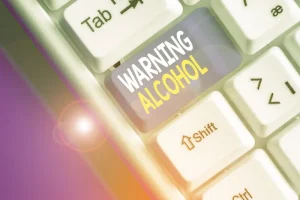What is a Halfway House? Benefits, Rules and Cost

Curfews ensure that you are home at a reasonable hour, not to exert strict control but to help you build time management skills and bring about normalcy. It’s like a bedtime story that reminds you to rest and replenish for the next day’s challenges. Our free email newsletter offers guidance from top addiction specialists, inspiring sobriety stories, and practical recovery tips to help you or a loved one keep coming back and staying sober.
Recovery Coaching
The living environment can be any type of dwelling, but most commonly is a single-family residence with shared bedrooms. Like level 1, this setting often proves to be quite cost-effective; the length of stay varies and is open-ended. At level 2 some degree of ‘programming’ is offered in-house and often in collaboration with outside service providers such as outpatient programs. The services and resources a halfway house provides depend on the type of operator, the purpose of the residence and thetypes of residents who live there.

Phone, Video, or Live-Chat Support

One of the premises of this theory was that society in general, as well as its communities and individual members, participates in the creation of economic, social, and cultural situations that engender criminal behavior. Consequently, according to the theory, amelioration of crime what is a halfway house and recidivism requires that the individual, neighborhood, community, and all of society be responsible for and involved in the reintegration of offenders. Sober living homes generally don’t have time limits, so residents can stay until they feel confident enough to move on.
- Halfway houses have more structured environments with strict rules, whereas sober living homes offer more flexibility and emphasize personal responsibility.
- The primary criterion for this living environment is a willingness to be abstinent from mood-altering substances.
- Licensed and credentialed staff members provide in-house program services.
- Journalists have revealed how, when individuals are required to have a halfway house lined up in order to be released on parole, they can encounter lengthy waitlists due to inadequate bed space, forcing them to remain in prison.
- Some halfway houses accept insurance, but it’s up to your insurance company to determine how much is covered and if you’ll need to pay a co-pay.
What happens when you live a sober life?

Involvement in a 12-step program was the strongest predictor of positive outcomes. Punishment applied with certainty, swiftness, and proportionate severity, it was believed, would deter offenders from further criminal activities. You should check with your insurance carrier to see what coverage they offer for a stay at a halfway home. Sober-living homes are usually privately owned and expect residents to pay for rent and utilities just like everywhere else. No funding disruptions usually occur, provided all the residents remain current on their rent. If you or a loved one are struggling with addiction or mental health disorders, call and speak with a member of our team today.
- Level 1 recovery residences offer supportive housing in a community-based peer environment.
- Let’s explore the common guidelines that make halfway house living effective in helping residents transition back into society.
- These abstinence rates remained mostly stable by the 12- and 18-month marks as well.
- Some examples of additional services may include transportation to appointments, recovery coaching, meals and gym memberships.
- Sober living homes are not for everyone, but if you think it might be right for you or a loved one, reach out to your doctor or therapist to see if they’re able to recommend one for you.
Are Halfway Houses and Sober Living Homes the Same Thing?

The term can also refer to a transitional home between incarceration and freedom, regardless of the residents’ drug abuse history. A halfway house is an essential element in the recovery process for individuals transitioning from addiction treatment to everyday life. This residential facilities offer a supportive, structured environment to help individuals smoothly transition from intensive rehab to independent living. The term “sober living house” typically refers to facilities for non-offenders who voluntarily seek help. Most houses require individuals to take part in some kind of addiction treatment program.
Finally, rehab is not a prerequisite requirement to sign up for a sober home, but residents of halfway houses must have completed rehab before their stay. The government funds halfway houses and offers less privacy but more structure than alternative sober living communities. Although sober living homes and halfway houses have some similarities, they have many differences. The length of stay can vary according to the level of care provided at the halfway house you choose. Most houses encourage a minimum stay of at least two to three months and may have a maximum stay between six months to one year to promote progress.
Although halfway houses are often funded by state governments, there may be a small weekly or monthly fee. Most of the folks who find themselves in a halfway house are people who have already completed some form of treatment for their addictions. Some people who are in a halfway house are actually at the beginning of their treatment process. They are using it as the first step toward committing to a more holistic approach to treating their addiction. In general, most people find themselves staying at a halfway house anywhere from three to twelve months.
- If you’re considering your options after the completion of a treatment program, contact a treatment provider today and continue your journey to a sober life.
- Every person is different when it comes to what will set them for success.
- The term ‘halfway house’ has come to mean different things in different parts of the country.
A halfway house is a residential facility designed to help people transition into independent living. They were initially developed as drug-free living environments for people who had completed residential treatment. These houses were meant to be “halfway” points between the restrictive structure of rehab and the complete independence of home.

Higher residential levels describe higher levels of service and structure. Delineating recovery residence levels allows the consumer to identify and match the service need to the appropriate level of the residence. Prison systems in many states use halfway houses to help individuals re-enter society after incarceration. These houses providean array of services that can include treatment for substance use disorders.
How To Connect With Sober Meetings and Local Support Groups In Orange County
Many people transition into sober living after finishing a residential program to continue their recovery journey in an outpatient setting. Halfway houses are dorm-style living spaces owned by a government or private agency. They can also be more crowded than sober living homes and offer fewer amenities.